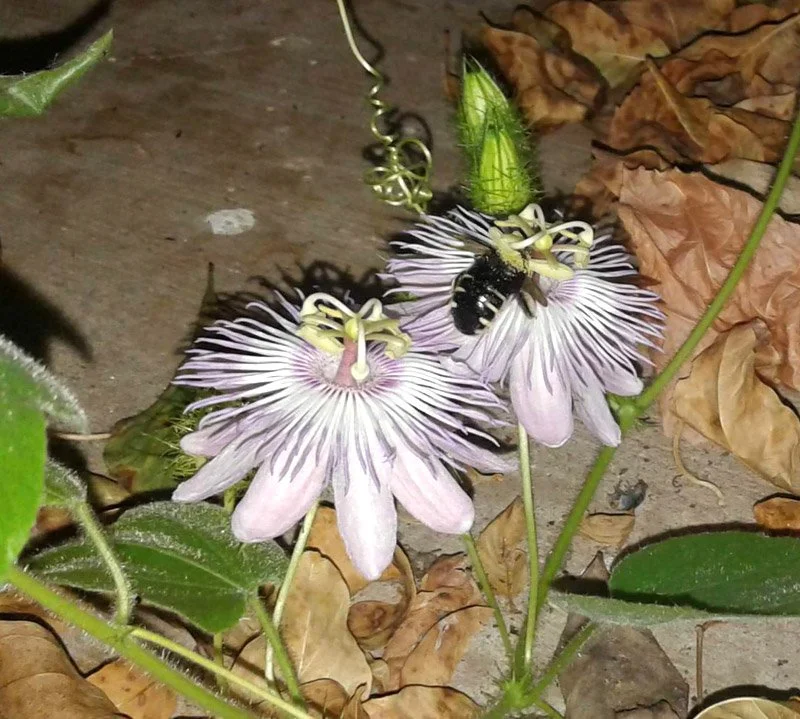The Passionflowers and the Bees
The quest to identify the remarkable bees that love my passionflowers
I discovered my passionflower plant growing in front of the lattice on the porch about four years after moving in. It remained a small unassuming plant for years. I didn’t realize until much later the simple fact that to get blooms you must water. I don't water the sunflowers or the bluebonnets or really anything else in the yard. But without water on the passionflowers, no blooms, and without blooms, no bees.
The Bees
[Picture: passionflowers with a wool carder bee, and two buds in the background]
The flowers attracted many bees, some tiny, some shiny green, some normal honeybees. But one group of bees really stood out. They seemed way more intelligent that your average honeybee, hovering and darting about like little reconnaisance helicopters, only faster. The honeybees seemed confused by the complicated blossoms, but these bees knew exactly what to do, often wearing a veritable vest of pollen that led me to believe for a time they were two species of bees.
It took me a long time to identify these bees. At first I thought they were bumblebees. But no, that didn't fit. Turns out they are European wool carder bees, so called because they scrape hairs from leaves to use in nesting. It was a bit disappointing to find that they are not native. But they are wild, pollinate well, and don't go overboard competing with native species. Wild bees that need help, native or not.
The Flowers
The passionflowers bloom a bit late in the year. June is the earliest I've seen blooms, sometimes not until late July. This is based on experience since 2021, with a killing freeze every year. Without that, the vines live through the winter, and might produce flowers earlier. Once they start, they bloom until late October.
They are also very vigorous. Not only do new plants come up from seed, but the core vine sends out lots of runners. They sometimes extend as far as a few yards away from the origin, where they put up new vines. I started with one stand of vines on the lattice and have ended up with a second dense group of vines in front of nearby shrubs, with other smaller vines scattered around.
When they are flowering, this gives the bees plenty of blossoms. That's where the balance comes in. If the caterpillars are too aggressive, the vines won't bloom, and the bees are left without this food source. So I must manage the plants so that all the different players get their chance.
A tiny vine beside the porch has become a study in miniature of how managing for balance keeps all the systems running smoothly.
